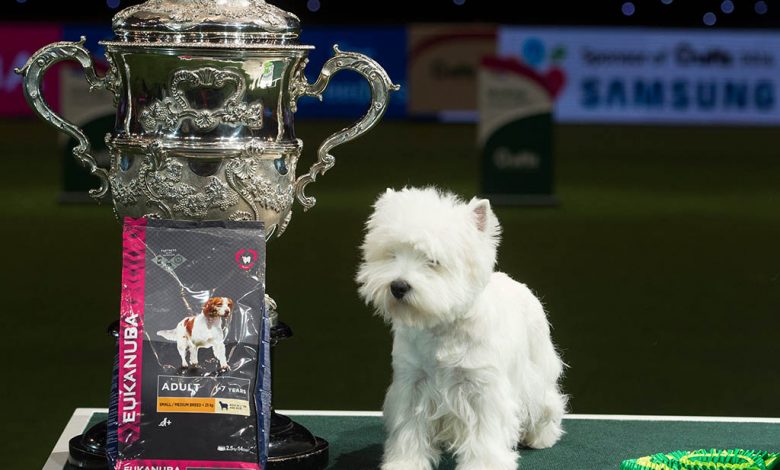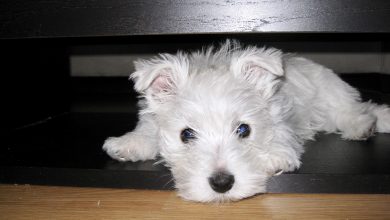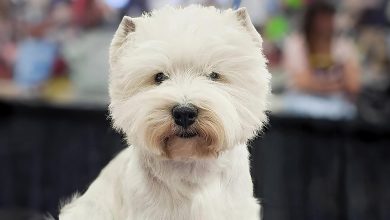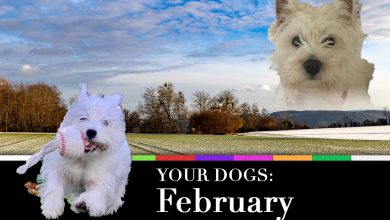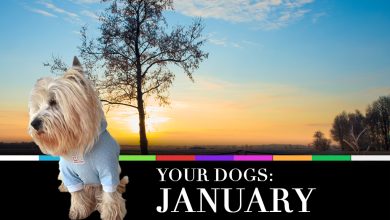Ciara Farrell, Library and Collections Manager at the UK Kennel Club explains the origins of the West Highland Terrier.
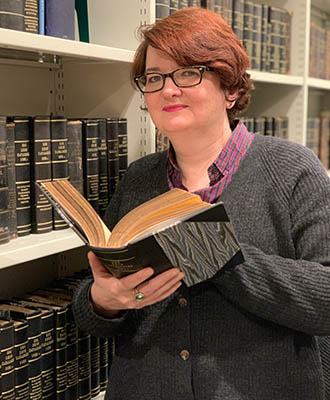
Kris (K): Tell us the history of our beloved dogs and the Terrier breed that led to the beginning of the West Highland White Terrier?
Ciara (C): Dogs have been around for over 14,000 years, perhaps longer, but one thing is they have been with us before cities, agriculture, and anything like that. Dogs and wolves got together to help each other out, millions of years ago. Dogs have what you call flexible morphology which means they come in different shape and sizes, more so than any other mammal. As humans we look the same, dogs don’t, that’s because they are task-adaptable, so they adapt to the task that humans need them to do. In the case of terriers, they are diggers, they go down holes, they find what’s down the hole, they bite it, and don’t let go, that is what terriers are bred for.
Terriers were developed for this in Britain and Ireland many thousands of years ago, but they have been known by that name for many hundreds of years. One of the oldest books we have in The Kennel Club Library is from the 16th Century, and it describes terriers exactly as you would imagine “they go down holes, they nip, bite, make foxes or badgers afraid and pull them out” that’s their job!
Terriers have a long history, in these islands, but Scotland is where they are originally from, they would have been doing lots of jobs on farms and with hunters. In Scotland it’s very rugged for terriers, they have a harsh double coat that keeps them warm and waterproof and they have great teeth. They were all lumped together, and just called Scottish terries. These days we have got, Cairn Terriers, Border Terriers, Scottish Terriers, West Highland Terriers and Sky Terriers. We have got the whole range of different terriers from Scotland, but once upon a time, they were all just hairy little dogs from Scotland, and they were just terriers. They were all used for different tasks such as hunting foxes, badges, otters and keeping down rats and mice, and other jobs on the farm.
K: Westies are known as the West Highland Terriers from Scotland but where did the story of the West Highland Terrier begin?
C: Now the story of the west highland terrier begins with a chap called, Colonel Malcolm and the story goes, he had terriers that were reddish/brown, and he was hunting foxes on his estate one day and he thought he was shooting a fox, and he accidently shot one of his terriers. Heartbroken that this had happened, he looked at some of the terriers he had and looked at some of the paler ones and said “I’m going to breed them white, so I never make this mistake again and shoot a dog by accident” now that’s a story, and we don’t know 100% if it’s true, but that’s allegedly how Colonel Malcolm came to breed white terriers.
For some reason, a lot of breeders at the same time, though a white dog, was much weaker and wasn’t good for hunting, so they use to dispose of the white puppies, however, Colonel Malcolm changed that and wanted the white terrier and bred them. He lived in Poltalloch in Scotland and one of the early names of the West Highland Terrier was the Poltalloch Terrier.
The dogs he bred back then wouldn’t have been pure white like our westies now, they were a creamy white. Now one of the books I have from 1903, which is Rawdon Lee’s Modern Terriers book, the author has some correspondence with Colonel Malcolm, and he had some great things to say about the breed. He said “they are not just white, they run between creamy white and sandy. They love all things but love mostly to get away with a young retriever and ruin him forever and teach him everything they should not do. They will make you a friend and he will know everything about you” so the Poltalloch Terrier is full of character and hunting instinct, and full of naughtiness by the sounds of it.
Colonel Malcolm wasn’t the only one breeding white terriers at the time. We’ve also got the Duke of Argyll and then Doctor Flaxman and they all decided to get in on the white terrier act, but the main ancestry will be from Colonel Malcolm and the ones he described breeding on his estate.
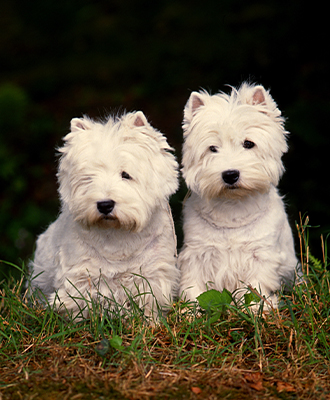
K: When did the West Highland Terrier become just that?
C: The West Highland Terrier got its first big mention in 1891 when a book called the Dogs of Scotland was published and they’re mentioned as their own separate type of terrier as at that point they weren’t really there, they were still a white variation on other terriers, but they developed a bit of a following. People were very keen on them and a breed club was set up for them, and then they started getting separate classes at shows and in 1907 the Kennel Club recognised them as a separate breed of dog as the West highland Terrier breed and that’s what they’ve been ever since.
K: How has the west highland terrier and dogs in general changed over the years?
C: Most of our dogs are unemployed now to be honest, we’ve got 222 breeds of dogs recognised by the Kennel Club and the overwhelming majority of them are beloved pets and don’t work on farms, they don’t hunt, they don’t do the things that dogs have traditionally done, but they have not lost the skills. You’ll see a terrier still has a strong jaw and they still kill socks and toys. Things like this to them are rats, otters and foxes and they will hang onto them and shake them until they’re dead, just like their ancestors did with real prey but now this is replaced with toys. The West Highland Terrier is a muscular tough little dog and has got that great weatherproof coat and they are quite strong, lively and a little stubborn, very intelligent and they could still do farm work if the need was there.
K: Why do you think the West highland Terrier has become so popular over the years?
C: They’re very good-looking dogs, I know you probably think they are the most beautiful dogs alive. They are very striking, and that white coat is so beautiful, and they’ve got great personalities and like a lot of their terrier cousins they are very adaptable which means they can live in cities and small spaces and as long as they’re getting out and about for their walks, they’ll be happy with that. A West Highland Terrier is also popular from being in the media sometimes, it doesn’t hurt for them to be featured a little bit and the westie has been popular in children’s books, adverts and movies. So, the westie does well on this basis of being well known in the media and because they’re very cute!
K: What do you love most about the West Highland Terrier breed?
C: I think they’re so characterful, each one of them has such a strong personality. I’ve known a couple quite well in my life and they are really great fun and people have such a partnership with them rather than an ownership. They’re loyal, they’ll do things for you, but because they want to, not because they feel like they have to. I feel like you’ve got an agreement with them about what they will do and it’s what they want to do. I don’t think you’re probably the boss of them particularly and I think that’s something that is appealing about lots of dogs, but I think it’s something that West Highland Terrier owners will recognise that they’ve got a partner and a friend.
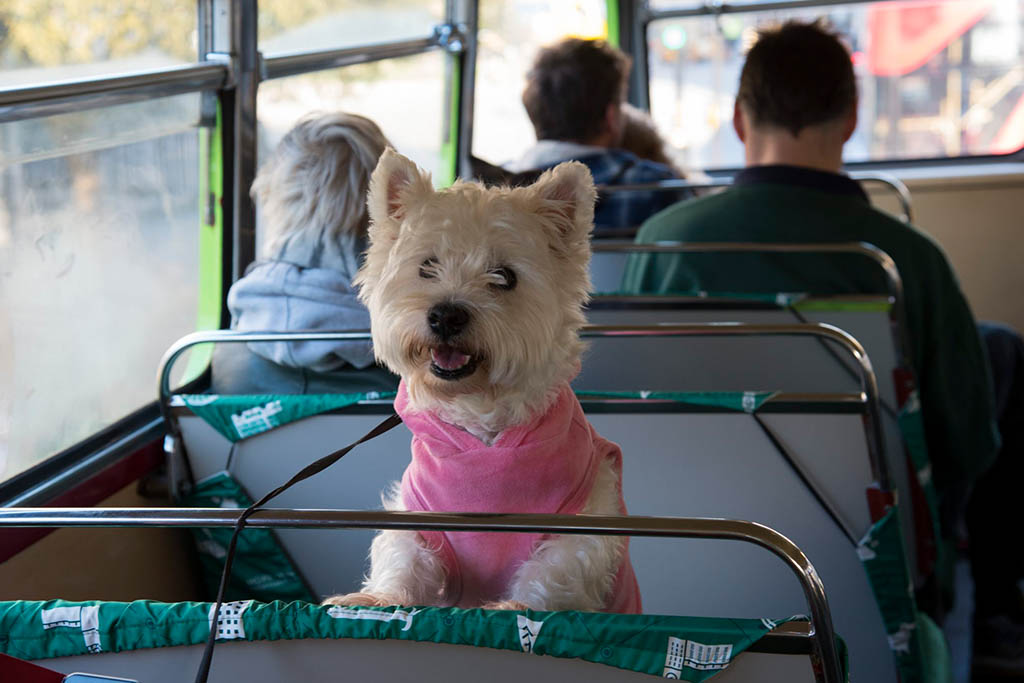
K: Ciara, you are the Library and Collections Manager at The Kennel Club, for any readers that don’t know, what is the Kennel Club?
C: The Kennel Club was founded in 1873 and it was founded first for the newly emerging sports of dog showing and field trials. Right now, we’re the largest organisation in the UK dedicated to the health, welfare and training of dogs. Our work is about ensuring that dogs can live happy healthy lives with responsible owners and one of our key aims is to ensure that dog owners choose the right breed for their lifestyle.
K: The Kennel Club holds Crufts every year, why do you think Crufts has become so popular with dog lovers and breeders alike?
C: Crufts is such a great show, it was set up by Charles Cruft in 1891 and from the beginning it was a big and popular dog show. It wasn’t quite as popular as Charles Cruft wanted, so what he would do, is tell the papers that it was the largest dog show in the world, they would write that down and the legend became true! Since then, it has become the biggest and most popular dog show ever. Charles got himself lots of press and lots of mentions and he even got Queen Victoria to enter the competition and she had never entered any other dog show, but she entered Crufts! Unfortunately, she didn’t turn up herself she sent one of her people, but she still entered a dog and competed at Crufts twice. Crufts celebrates its 130th anniversary this year, we have our fingers crossed that Crufts 2021, which traditionally happens in March, will be held in July, we are still not sure what shape it’s going to take at this point, but we are seriously hoping that we will get our 130th show done this July.
K: We have to talk about the West Highland Terrier Devon, who in 2016, won the Crufts title – Best in Show, what made her the winner in your opinion?
C: Champion Burneze Geordie Girl is her Kennel Club name and Devon is her pet name. She was young when she won, and judges just saw something special in her. I met her she’s delightful and a lot of the winners come to the Kennel Club for a lovely day out to do press and meet the staff and so on. Devon, she was very cuddly and so lovely. Her breeder Marie, who is also her owner and handler came with her and she was such a nice woman too.
We did have Olac Moon Pilot in 1990 this was our other West Highland Terrier Crufts winner but that’s way before my time with the Kennel Club however, both are very deserving winners.


